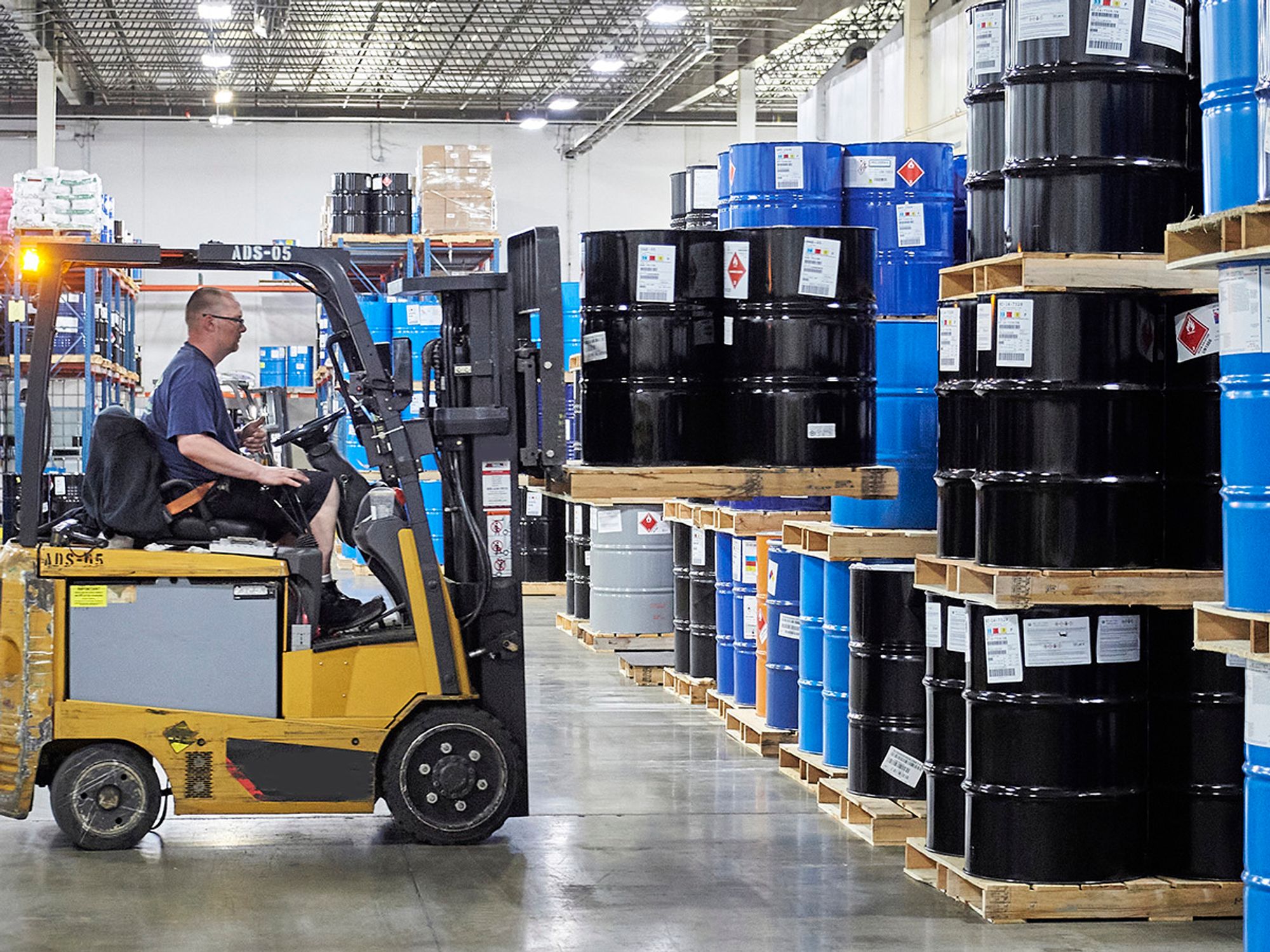InstituteSafety & HealthForklifts and Powered TrucksGeneral Industry SafetyForklifts and Powered TrucksEnglishSafe Operation of PITsAnalysisFocus AreaCompliance and Exceptions (Level 2)USA
What are the requirements to operate in hazardous atmospheres?
['Forklifts and Powered Trucks']

- Depending on hazards present, certain Powered Industrial Truck (PIT) types are better suited for different workplaces.
Where chemicals or other hazardous substances are or can be present, special precautions must be taken to select the correct type of PIT.
To make the correct selection, the employer must know the:
- Type of location (known as Class),
- Specific chemical or substance,
- Likelihood for the hazard to exist (Division), and
- Type Designation for each PIT.
Classified locations
The table below, used with permission of the Washington Department of Labor and Industries, shows the criteria to pick the safest forklift for certain workplaces.
- The first column of the table shows the hazard class of the material.
- The rows contain chemicals or substances that might be handled at a workplace.
- The second and third columns are the divisions that represent the exposure condition.
- The hazard designations listed in the second or third column are interpreted in the Explosion/Combustion Hazards table below.
| In an area where this hazard classification is present: | Operators should use this type of forklift. | |
|---|---|---|
| Class I Flammable gases or vapors are or may be present in quantities sufficient for explosion or ignition. | Division I Condition exists continuously, intermittently, or periodically under normal operating conditions. | Division II Condition may occur accidentally, e.g., puncture of a storage drum. |
| Acetylene, acetaldehyde, butadiene, cyclopropane, diethyl ether, ethylene, ethylene oxide, isoprene, propylene oxide, hydrogen (or gases or vapors equivalent in hazard to hydrogen, such as manufactured gas), unsymmetrical dimenthylhydrazine (UDMH) | Forklift use prohibited. | DY, EE, EX (also DS, ES, GS, LPS) if the only exposure is sealed containers or liquefied or compressed gases in containers. |
| Acetone, acrylonitrile, alcohol, ammonia, benzine, bensol, butane, ethylene dichloride, gasoline, hexane, lacquer solvent, natural gas, naphtha, propane, propylene, styrene, xylenes, vinyl acetate, vinyl chloride. | EX | DY, EE, EX (also DS, ES, GS, LPS) if the only exposure is sealed containers or liquefied or compressed gases in containers. |
| Class II Combustible dust is present. | Division I Explosive or conductive mixture may be present under normal conditions or where equipment failure can lead to both this condition and arching or sparking. | Division II Explosive mixture not normally present but where deposits of dust may cause heat rise in electrical equipment |
| Aluminum, magnesium, and their commercial alloys; other metals of similarly hazardous characteristics. | Forklift use prohibited. | Forklift with electrical enclosures manufacturer approved where magnesium, aluminum, or aluminum bronze may be present. |
| Carbon black, coal or coke dust. | EX | Forklift manufacturer approved for this location. |
| Other combustible dusts. | EX | DY, EE, EX |
| Class III Easily ignitable fibers or flyings are present but not likely to be in suspension in quantities sufficient to ignite. | Division I Locations in which these materials are handled, manufactured, or used. | Division II Locations in which these materials are stored or handled (other than manufacturer). |
| Baled waste, cocoa fiber, cotton, excelsior, hemp, istle, jute, kapok, oakum, sisal, Spanish moss, synthetic fibers, tow. | DY, EE, EX | DS, DY, ES, EE, GS, LPS (Type E may continue to be used if used previously at this location.) |
| Unclassified Locations Piers and wharves inside and outside general storage, general industrial, or commercial properties. | D, E, G, LP (more protective designations may also be used) | |
Explosion/Combustion hazards
All forklifts have a hazard designation assigned to them that tells whether they are suitable for use in certain kinds of hazardous atmospheres. The designation can be found on the forklift’s load capacity plate. The table below explains the designations.
| Type | Built-in safeguards against fire hazards |
|---|---|
| D (Diesel forklift) | Minimal safeguards for fire hazards |
| DS | D + additional for fuel, exhaust and electrical systems |
| DY | DS + all electrical equipment enclosed |
| E | Minimal safeguards for fire hazards |
| ES | E + prevents sparks and limits surface temperatures |
| EE | ES + all electric motors and equipment completely enclosed |
| EX | Can be used in flammable vapor or dust atmospheres |
| G (Gasoline forklift) | Minimal safeguards for fire hazards |
| GS | G + additional for fuel, exhaust and electrical systems |
| LP | Minimal safeguards for fire hazards |
| LPS | LP + additional for fuel, exhaust and electrical systems |
